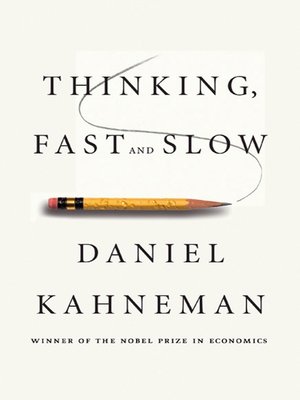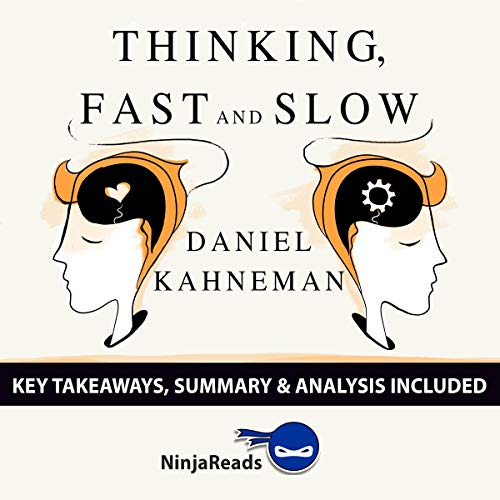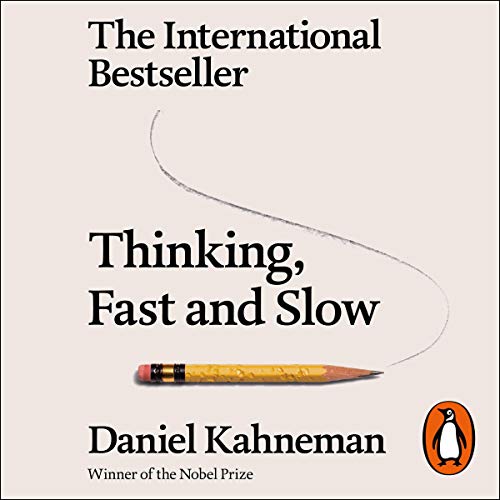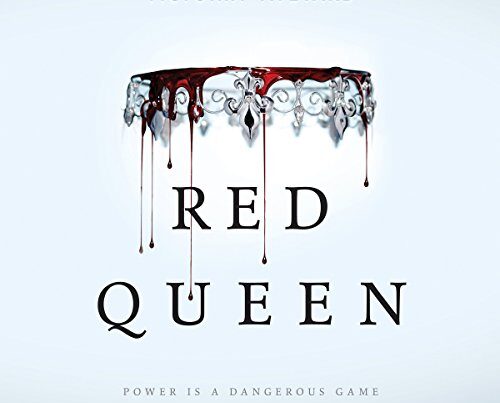“Thinking, Fast and Slow” by Daniel Kahneman explores the two systems of thought: fast, intuitive thinking and slow, deliberate thinking. The audiobook delves into how these systems shape our judgments and decisions.
Daniel Kahneman, a Nobel laureate, presents groundbreaking insights into human cognition in “Thinking, Fast and Slow”. The book explores two distinct modes of thought. System 1 is fast, intuitive, and emotional. System 2 is slower, more deliberative, and logical. Kahneman reveals how these systems influence our thinking, decisions, and behavior.
He explains cognitive biases and how they affect our daily lives. The audiobook is a must-listen for anyone interested in psychology, decision-making, and behavioral economics. It offers practical insights to improve critical thinking and decision-making skills.

The Dual Systems Of Thought
In “Thinking, Fast and Slow,” Daniel Kahneman explores the mind’s two systems of thought. These systems, named System 1 and System 2, shape our thinking and decision-making. Understanding these systems helps us grasp how we make choices and form judgments.
System 1: Intuitive And Effortless
System 1 operates automatically and quickly. It uses little or no effort. This system is our intuitive mind. It helps us react swiftly to everyday situations. For example, recognizing faces or understanding simple sentences.
- Fast and automatic
- Uses little effort
- Relies on instincts
- Handles simple tasks
System 1 is crucial for survival. It helps us react quickly to danger. Yet, it can also lead to errors. It often relies on assumptions and shortcuts.
System 2: Deliberate And Logical
System 2 is slower and more deliberate. It requires effort and conscious thought. This system is our logical mind. It is used for complex tasks like solving math problems or planning a trip.
- Slow and deliberate
- Requires effort
- Relies on logic
- Handles complex tasks
System 2 helps us think carefully and make reasoned decisions. It checks and balances System 1. This ensures our choices are well thought out.
Both systems work together. This balance helps us navigate the world effectively. Understanding these systems can improve our decision-making skills.

Impact Of Cognitive Biases
Daniel Kahneman’s audiobook, Thinking, Fast and Slow, delves into how cognitive biases shape our decisions. Understanding these biases can help us make better choices. The audiobook reveals the surprising ways our minds can trick us.
Anchoring Effect In Decision Making
The anchoring effect influences how we make decisions. We rely heavily on the first piece of information we receive. This initial information serves as an “anchor” and skews our thinking.
For example, imagine you see a jacket priced at $200. Later, you find another jacket for $100. The $100 jacket seems like a great deal. The $200 price anchored your perception of value.
Anchoring affects many areas of life, such as shopping, negotiations, and even medical diagnoses. Being aware of this bias can help us make more rational decisions.
The Role Of Availability Heuristic
The availability heuristic is another cognitive bias explored in the audiobook. This bias occurs when we judge the likelihood of events based on how easily examples come to mind.
For instance, after hearing about a plane crash, you might think air travel is unsafe. The crash is vivid in your memory, making it seem more common than it is.
The availability heuristic can lead to overestimating risks and making poor decisions. Recognizing this bias can help us seek out more accurate information.
Examples of Cognitive Biases in Everyday Life
| Type of Bias | Example |
|---|---|
| Anchoring Effect | Setting a high initial price in negotiations |
| Availability Heuristic | Believing shark attacks are common after watching the news |
- Anchoring Effect skews our initial judgment.
- Availability Heuristic impacts risk assessment.
Understanding these biases helps us make better choices. Kahneman’s audiobook provides insights into our decision-making processes.
Applying Insights To Everyday Life
Daniel Kahneman’s Thinking, Fast and Slow audiobook reveals the intricacies of our thought processes. By understanding these insights, we can improve various aspects of our daily lives. This section explores practical ways to apply Kahneman’s wisdom.
Improving Financial Choices
Kahneman’s research offers valuable advice for making better financial decisions. He explains how our brains use two systems of thinking: System 1 (fast and intuitive) and System 2 (slow and deliberate). By recognizing these systems, we can avoid common financial pitfalls.
- Avoid impulsive purchases: Use System 2 thinking for major purchases. Take time to consider all options.
- Invest wisely: Research thoroughly before making investment decisions. Don’t rely on gut feelings.
- Save regularly: Set up automatic savings plans. This removes the need for constant decision-making.
Enhancing Critical Thinking Skills
Critical thinking is essential for problem-solving and decision-making. Kahneman’s insights help us refine these skills.
- Question assumptions: Always ask why you believe something. Challenge your initial thoughts.
- Gather diverse perspectives: Seek opinions from different people. This broadens your understanding.
- Reflect on decisions: Take time to review past decisions. Learn from both successes and mistakes.
By applying these techniques, you can enhance your critical thinking abilities. This will lead to more informed and effective decisions in all areas of life.

Conclusion
Delving into “Thinking, Fast and Slow” by Daniel Kahneman offers profound insights into human decision-making. This audiobook challenges our understanding of thought processes. It’s a must-listen for anyone interested in psychology and self-improvement. Enhance your critical thinking and make better choices with the wisdom from this transformative book.



